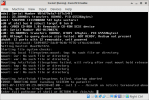Long term Linux user here (with stress on user). Been keeping an eye on FreeBSD for a while. With 13.0 around the corner, I think I'm finally ready to make the switch, especially since afaik 13.0 will offer fairly complete hardware support for my Thinkpad E570.
Before I get started, I have a question, though. I have a setup with 2 hard drives, one SSD and one actual "spinning disk" one. I would like to put the system install on the SSD, and the /home partitions/slices on the HD. What would be a good approach to achieving this (with a fresh install)? Also, am I correct in assuming that I probably want to be using UFS in this case, and not ZFS? I've read this, but still can't quite wrap my head around it.
Before I get started, I have a question, though. I have a setup with 2 hard drives, one SSD and one actual "spinning disk" one. I would like to put the system install on the SSD, and the /home partitions/slices on the HD. What would be a good approach to achieving this (with a fresh install)? Also, am I correct in assuming that I probably want to be using UFS in this case, and not ZFS? I've read this, but still can't quite wrap my head around it.


